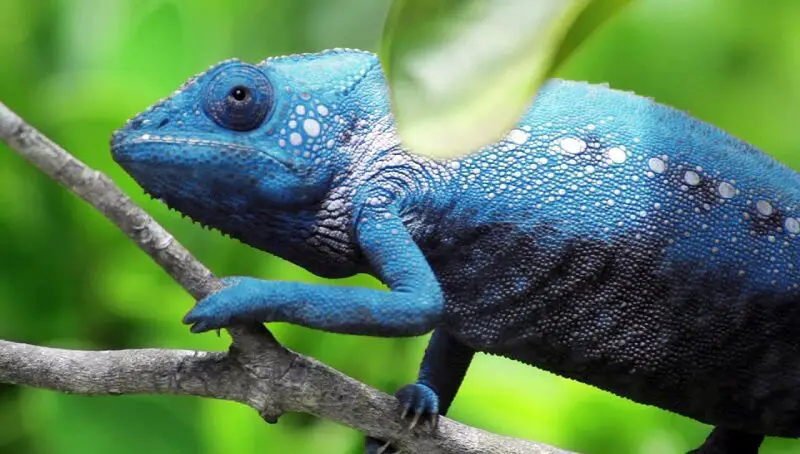
Beagle Breed Profile – Do They Make Good Pets?
November 10, 2022
Can Dogs Eat Tomatoes? Risks and Benefits
November 10, 2022
Chameleons are known for many of their unique qualities, including their sticky tongues that are thrown like a projectile, eyes that move independently of each other, and perhaps most fascinating of all, their ability to change skin color.
How do they change colors? Can it fit into anything in the environment? Why do they change colors? The ability to change color to match their surroundings has been tried by people for years and often mimicked by hunters, soldiers, and teenagers who sneak out of the house.
But few have the skills that our beloved chameleons possess. They do not have a single camouflage pattern, but they can change and adapt to their environment using their extremely special skin cells.
For sure, most of us have wondered at least once how it is possible for a chameleon to change its color. Although many believe that these animals change color to camouflage, chameleons do so for different reasons. Let’s find out together how and why the chameleon changes its color. You certainly did not know the reasons.
The colors of the chameleon
Television commercials, shows, and movies show how chameleons can magically change their skin colors to match the ones they sit on, almost instantly. But although there is a truth in this magic, chameleons have color limitations that they can imitate and cannot match anything.
Green and brown are the predominant colors of chameleons, and these shades help them camouflage in their environment. Black is another color that you can see in chameleons, especially on the neck, and some chameleons use this color to show that they feel threatened.
You might also like my articles with interesting facts about the black mamba and fire salamander and our article on whether frogs are reptiles.
Some species of chameleons can turn into more vibrant colors, such as pink, red, blue, turquoise, or yellow. Panther chameleons and Madagascar chameleons are some of them. They are known to be extremely colorful and are also some of the most photographed types.
How does a chameleon change its colors?
 Until recently, no one fully understood exactly how chameleons change their colors. We now know that they change color by adjusting the microscopic cells in their skin to reflect light differently.
Until recently, no one fully understood exactly how chameleons change their colors. We now know that they change color by adjusting the microscopic cells in their skin to reflect light differently.
These cells are called iridophore cells and contain tiny crystals called nanocrystals. Nanocrystals of different sizes, which are arranged in different shapes and groupings, cause light to reflect in different ways, causing chameleon skin to change colors, similar to how a crystal hanging in a window reflects sunlight and shines a rainbow on the wall.
A chameleon’s skin is full of these tiny crystals, and when it moves its skin to relax or strain its body, the crystals change and reflect different light. The skin cells swell and shrink so that they can approach and depart.
Shorter wavelengths of light, such as blue, are reflected when the skin is relaxed and the iridophore cells are close to each other. Because the chameleon’s skin also contains yellow pigments, blue and yellow colors mix to create a color that we often see in resting chameleons, green.
Longer wavelengths of light, including red and yellow, are reflected when skin cells are more distant. Research has also found that female chameleons have far fewer iridophore cells in the upper layer of skin, making males able to change color better than females do.
Why do chameleons change their color?
Camouflage in their environment is the main reason why chameleons will change colors, so they can hide and escape predators. But camouflage is not the only reason to change their appearance. Scaring rivals, impressing other chameleons, stress, and preserving heat or cooling their skin are all potential reasons for dramatic color changes.
Specifically, because they cannot generate their own body heat, changing the skin color of chameleons is one way they maintain a favorable body temperature. A chameleon’s skin color may become darker to absorb more heat, while a chameleon may become pale to reflect the sun’s heat.
Also, chameleons change the color of their skin to communicate. Males become bright to signal their dominance and darken in aggressive encounters. At the same time, by changing the color, females can inform males whether they are willing to mate or not.
Chameleons brought to visit the veterinarian can turn into dark colors or even black due to stress, while happy and relaxed at home, chameleons will have bright green and blue. Some chameleons can transform into more colors than others, but all chameleons possess an amount of iridophore cells in the skin.
Chameleons, like many lizards, are amazing pets!
